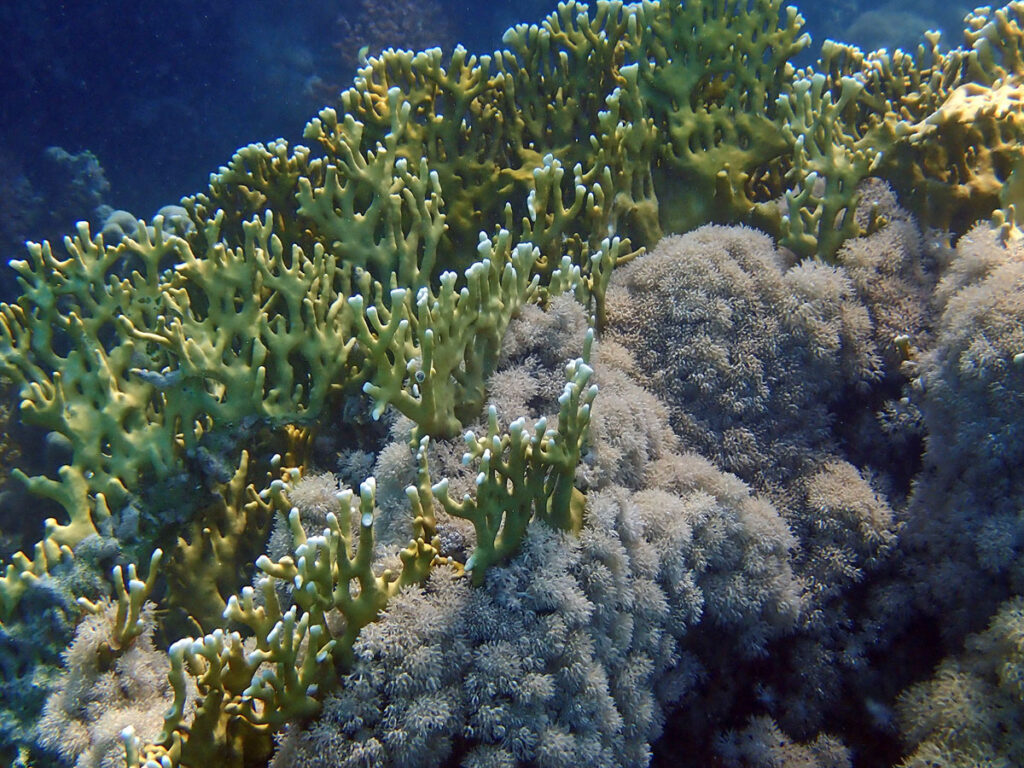Fire corals are so called because they sting. When something touches the coral, a coiled thread is ejected, penetrating the skin and injecting venom. These powerful stinging hairs are called cnidae.
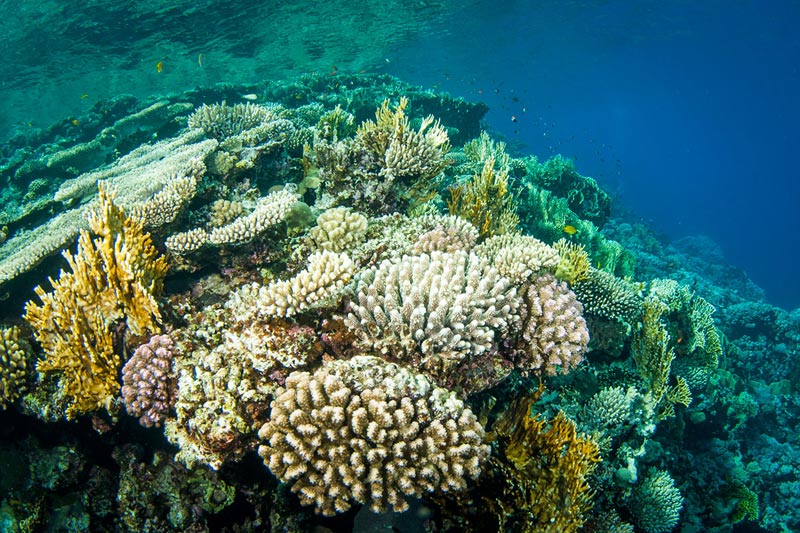
Divers injured
The coral is primarily defending itself against fish like parrotfish which would otherwise nibble it. However, the sting is strong enough to injure divers and snorkellers who brush their skin against them, causing burning and itching. Just see the comments below for stories about how bad this can be. (If you’re injured rinse with seawater and apply vinegar or methylated alcohol on the affected area. In a severe case anti-histamines can help, but seek medical advice.)
Not true corals
Colonies of fire coral are extremely important in building coral reefs. However, they are not true corals. They are, in fact, hydroids. The word hydroid means water animals. Other hydroids often look like ferny fronds growing from rocks. The fire coral is different: it looks like a hard coral.
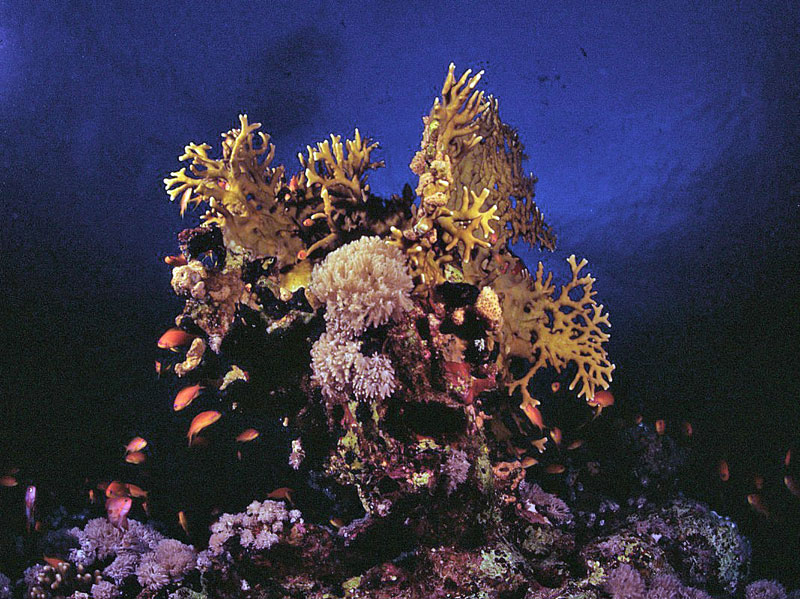
How to identify them
Fire corals are yellowish to brown in colour, often with white tips. There are several species and different growth forms. Some look like plates, some are encrusting but maybe the most familiar is the branching form. You can identify them by the minute pores on the coral surface.
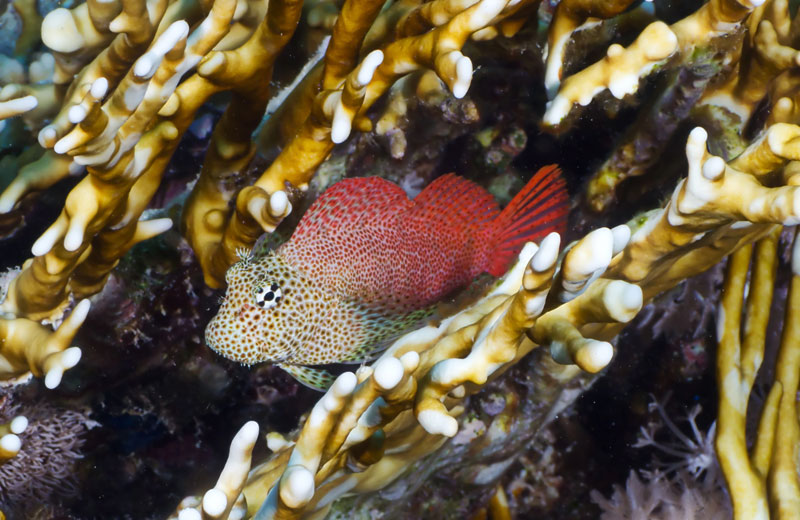
Divers come across fire corals on tropical reefs throughout the world, in sheltered and exposed sites, in shallow and deeper water down to 40 m. There are about 14 species in the Millepora genus.
Fire corals are often at the reef edge as they can withstand rough waters and currents.

Millepora tend to be oriented perpendicular to prevailing currents. This maximises their exposure to water flow allowing them to capture more food particles carried by the currents. It increases increases the surface area exposed to nutrient-rich waters. If fragments get broken during a storm they can regenerate. They are often the first to recover after short-term bleaching events.
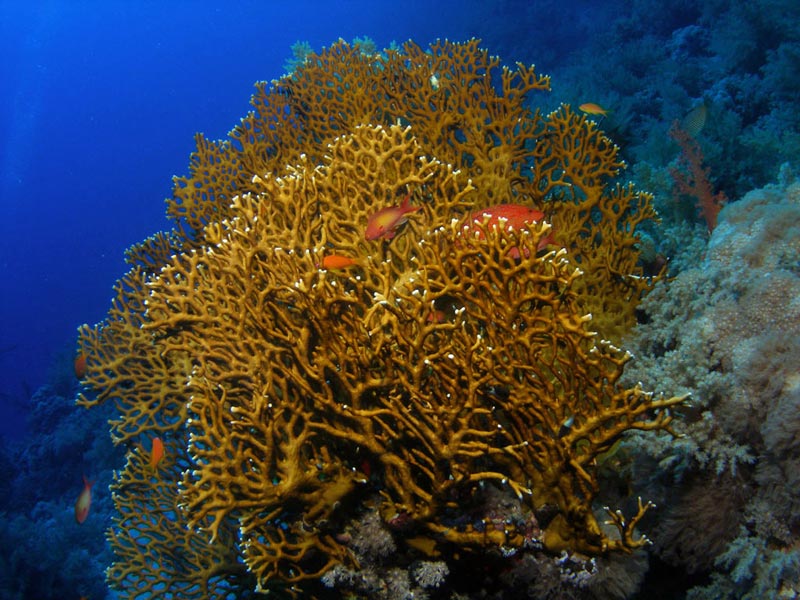
Further Reading:
The Red Sea in Egypt Part II, Farid S. Atiya, 977-00-6697-4
John B. Lewis, Biology and Ecology of the Hydrocoral Millepora on Coral Reefs, Advances in Marine Biology, Academic Press, Vol 50 2006
Image credits:
- Fire coral and xenia, Red Sea, Marsa Shona: Jill Studholme
